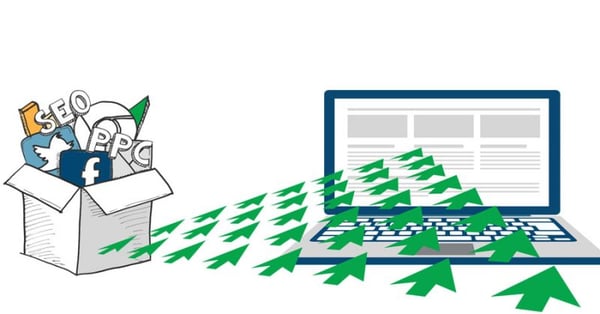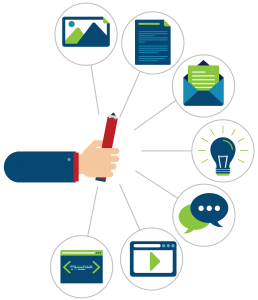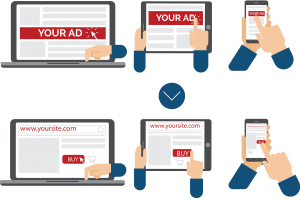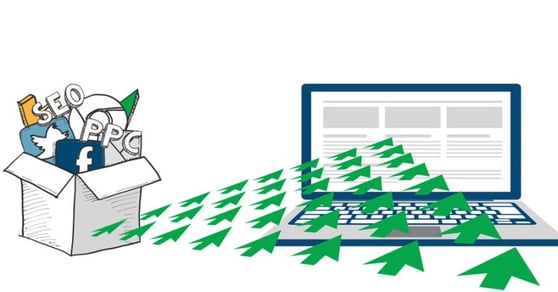Editor's Note: This post was originally published in June 2017 and has been updated with new content and details in October 2023.
“The Internet is becoming the town square for the global village of tomorrow."
- Bill Gates
It's hard to believe that the Microsoft Co-founder made this prediction back in 1999! His analysis has never rung truer. Even a cursory look at the business landscape today makes it obvious that having a strong, visible web presence is absolutely vital to ensuring a steady flow of sales leads to any business.
On the Internet, as in the world of business, vying for clicks is as competitive as any marketplace, and your website may need that winning edge in order to overcome the aggressive fight for online supremacy. One of the most common and simplified methods of achieving this is to increase the overall website traffic to your website through a combination of digital marketing tools. So, here are four easy ways to quickly boost your website traffic.

1. Use Search Engine Research To Get Traffic to Your Website - Discover your Customer's Voice!
Tools such as Google AdWords or SEMrush can help prepare the copy for your ad campaigns and give invaluable and actionable insights into your customer base and buying/searching behavior. This will help you design the layout and language of the site while keeping your customer expectations in mind.
For example, you may find that most web searches to your web page are based on problem-solving or emergency inquiries like "How can I protect my software IP?" or "Next day flower delivery." Using these insights to create content that solves these customer problems could be a good start.
Finding the right words or phrases relevant to your business can also help you deliver workable findings in the design and layout of your web page. Since most people use search engines to answer their questions, why not base your content on problem-solving behavior?
Remember, optimizing your website for relevant traffic is one of the best ways to boost website traffic and drive more traffic to your site. It's all about getting organic traffic, generating search traffic, and promoting your website effectively.
By incorporating these strategies and keeping your content relevant to your business, you can create a winning formula to increase website traffic and draw more visitors. Don't forget to add links to your website where appropriate to enhance referral traffic and bring visitors back to your site. Like Google, you want to be a valuable resource for your target audience and attract relevant traffic that converts into loyal customers.
2. Content Strategy/Blogging - Optimize Your Site with Keywords!
Now that you fully understand your customer's voice, you can use your newly found keywords to guide  your content marketing. You have a better chance of driving traffic to your website by peppering your web pages with words and phrases they are most likely to use during online searches. Of course, it’s equally important that your content is not crammed with every keyword that is relevant to you! (Google is watching and may flag you for lousy content).
your content marketing. You have a better chance of driving traffic to your website by peppering your web pages with words and phrases they are most likely to use during online searches. Of course, it’s equally important that your content is not crammed with every keyword that is relevant to you! (Google is watching and may flag you for lousy content).
It is essential to understand that onsite SEO is your site's way of communicating your business offerings to a search engine. When the concept of SEO began, it was all about trying to 'fool the algorithm' without ‘‘poking the bear.’ A sound content strategy will help you stay competitive in your market. Google spiders love change, so don't delay. The more frequently you add content, the higher you will appear on the search results pages!
For Example, a Dublin-based car dealer who wants to be found online by people using search phrases like "cheap cars" or "spacious Ford Cars" must include these keywords on their website. It is equally important that the same message and content quality is maintained in landing pages relevant to those searches. The same applies to your blog posts, news stories, and other content.
3. Social Media Marketing - Add Another String to your Inbound Marketing Bow
Company Directors always get very excited at the prospect of 'free advertising.' Still, it’s essential to remember that social media marketing is more of an ingredient than an entrée when boosting traffic to your website. Depending on the size of your business, you might want to allocate a considerable amount of time to social media marketing. However, you have to keep in mind that despite the relatively free cost of posting, you may need to invest extensive time and resources to see real results regarding website traffic.
 Having an arsenal of solid social channels such as Facebook, Instagram, and others is ideal for supporting your website. It can provide an extension for not only your business communications but the products/services being offered as well. This extension can help boost traffic and improve website traffic significantly.
Having an arsenal of solid social channels such as Facebook, Instagram, and others is ideal for supporting your website. It can provide an extension for not only your business communications but the products/services being offered as well. This extension can help boost traffic and improve website traffic significantly.
Another great way to promote healthy SEO is by placing links on social media platforms that connect to your web pages (e.g., blog posts). Google will view them as ‘social signals’ of proven web content – social signals being your webpage's collective shares, likes, and overall social media visibility as perceived by search engines. This, in turn, positively impacts SEO, which can further drive traffic to your site.
4. Paid Advertising - Targeted Spending, the Smart Way!
By now, your web page is fully loaded with enough content and relevant keywords to set your traffic numbers soaring, but of course, you can't expect to become an Internet champion that easily. To really break into the digital space, sometimes you have to spend money to make money.
Before you jump into online advertising, it is vitally important to gauge your audience, know the territory, and set limits and expectations for your online advertising campaign.
A practical option for this is display/banner ads to immediately engage your audience with a rich media message on a web page relevant to their own interests. This tactic suits a more spontaneous sales opportunity and generally works best for people not actively searching for your product or solution.
Knowing which platforms will best suit your company is also paramount. Are you a restaurateur who favors Google Search ads to inform your customers of your location or phone number quickly? Or, maybe you’re a manufacturer with a long sales cycle where serving up extensive information is better suited to sell your product. Whatever the offering, you must match the ad platform to your customer buying behavior. For example, promoting a business software product on LinkedIn, a platform driven by and for businesses, makes more sense than promoting it on Instagram.
Google Search ads to inform your customers of your location or phone number quickly? Or, maybe you’re a manufacturer with a long sales cycle where serving up extensive information is better suited to sell your product. Whatever the offering, you must match the ad platform to your customer buying behavior. For example, promoting a business software product on LinkedIn, a platform driven by and for businesses, makes more sense than promoting it on Instagram.
So there you have it; with a strong focus on integrating these digital marketing strategies into your daily marketing practices, you will be well on your way to building your website, gaining traffic, building real brand awareness, and maximizing your rate of return for your business. Always remember to be aware of your customer’s needs and behaviors, which will help you stay ahead of the curve and boost website traffic.





